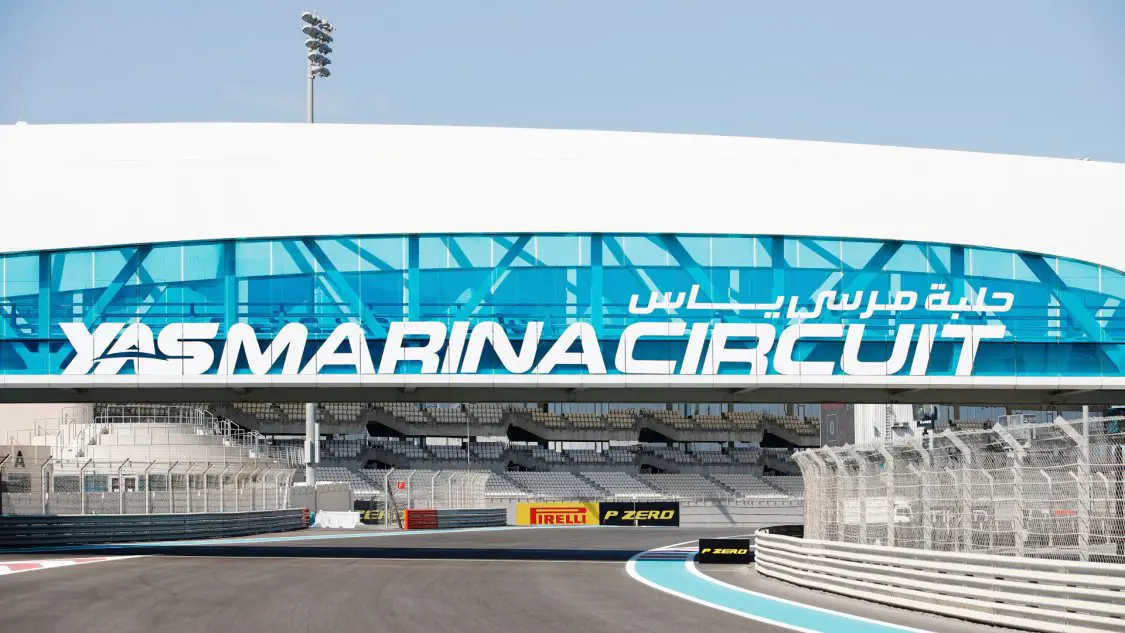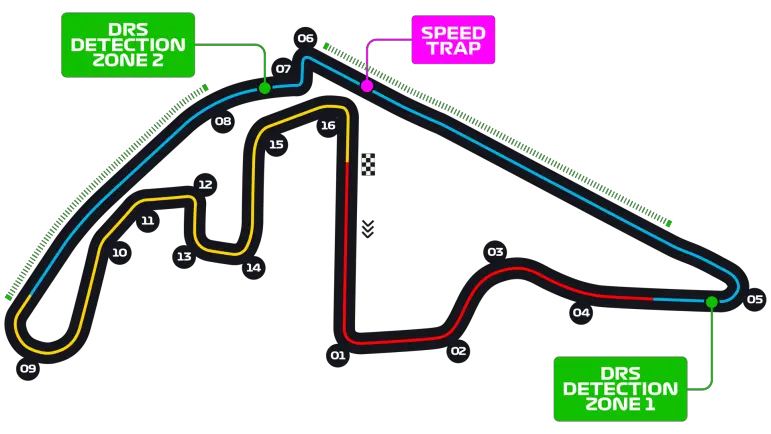Fastest lap at the Abu Dhabi Grand Prix: The Abu Dhabi Grand Prix will take place at the Yas Marina circuit this weekend – who has been the fastest at this venue?
The inaugural Formula One Festival in Abu Dhabi marked the debut of Formula 1 in the region in 2007. Subsequently, the Abu Dhabi Grand Prix was added to the racing calendar in 2009 for that season’s 19th and concluding race on November 15th. Notably, it was Formula One’s first day-night race, commencing at 5:00 PM local time. Let’s take a look which F1 driver holds the record for the fastest lap in the history of this prestigious Grand Prix.
During the 2021 Abu Dhabi Grand Prix, Max Verstappen set the fastest lap record while driving the Red Bull RB16B. This race, spanning 58 laps, marked the concluding round—number twenty-two—of the 2021 Formula One World Championship. It held crucial significance in determining both the Drivers’ and Constructors’ championships, with Max Verstappen and Lewis Hamilton tied at 369.5 points before the race commenced.
Hamilton led for most of the race, aiming for a potential record-breaking eighth World Drivers’ Championship after taking the lead at turn 1 on the first lap. Yet, Verstappen emerged as the eventual victor, making a crucial overtake on Hamilton during the last lap after a contentious safety car restart in the race’s closing moments. Verstappen’s triumph marked his inaugural Formula One World Drivers’ Championship, securing it with an eight-point lead over Hamilton. This win also granted Red Bull Racing their first Constructors’ Championship since 2013. Meanwhile, Mercedes clinched their eighth consecutive Formula One World Constructors’ Championship, establishing a new record.
Does the Yas Marina Circuit encourage faster timings?
The Yas Marina circuit is famous for its contemporary layout, offering numerous chances for overtaking and featuring a diverse design that tests drivers with a blend of technical turns and high-speed sections. Various elements, such as the track’s design, surface, and layout, all play roles in fostering faster lap times at this circuit.

The Yas Marina circuit’s extended straight allows Formula 1 cars to hit their highest speeds, notably the stretch following Turn 7 leading into Turn 8, offering drivers a key opportunity to accelerate before braking into subsequent corners. This setup allows cars to gather significant speed, contributing substantially to quicker lap times.
Despite the lengthy straights, the circuit incorporates technical segments necessitating precise handling and braking, notably in Sector 2. Here, a series of tight corners demand drivers to decelerate and maneuver with precision. This mix of high-speed straights and demanding technical segments creates a dynamic that challenges drivers to optimize their pace throughout different parts of the track.
Abu Dhabi’s climate contributes to faster lap times at the Yas Marina Circuit, especially in November when cooler temperatures enhance engine performance and tire grip, resulting in quicker overall laps. The smooth tarmac provides excellent traction, enabling faster cornering speeds, while meticulous track maintenance minimizes debris or imperfections, empowering drivers to confidently push their cars to their limits.
How many DRS zones will be there at the 2023 Abu Dhabi Grand Prix?
During the 2023 Abu Dhabi Grand Prix at the Yas Marina circuit, there will be two designated DRS (Drag Reduction System) Zones. The first zone detects cars in the braking zone for Turn 5 and engages the system just after that turn. The second zone detects cars exiting Turn 7 and activates the DRS a bit further along the straight following Turn 7.
At Abu Dhabi’s initial DRS Zone, the detection point is positioned 250 meters before Turn 5, while the activation point is 210 meters after Turn 5, situated along the circuit’s longest straight. To optimize overtaking opportunities, drivers typically aim to be within 1 second of the car ahead by the detection point before Turn 5. Activating the DRS at the start of the straight enables them to close the gap and potentially pass the leading car, especially if they were trailing by less than a second.

In the second DRS Zone at Yas Marina, the detection point is positioned 50 meters after Turn 7, with the activation point following 165 meters after Turn 7. Strategically situated, this zone acts as a continuation of the first, where many overtaking maneuvers happen into Turn 7. Following right after the initial zone, the second DRS Zone offers a chance for a recently overtaken car to quickly retaliate and regain its position. This arrangement often sparks intense racing and thrilling battles on the track.
More Formula One News
- LISSIE MACKINTOSH NET WORTH 2023, MARRIAGE, F1 CAREER AND MORE
- LIA BLOCK NET WORTH 2023, SALARY, RECORDS, AND ENDORSEMENTS
- LISSIE MACKINTOSH BOYFRIEND: WHO IS THE BOYFRIEND OF F1 SOCIAL MEDIA INFLUENCER?
Follow our dedicated Formula One page for instant Formula One news and updates

